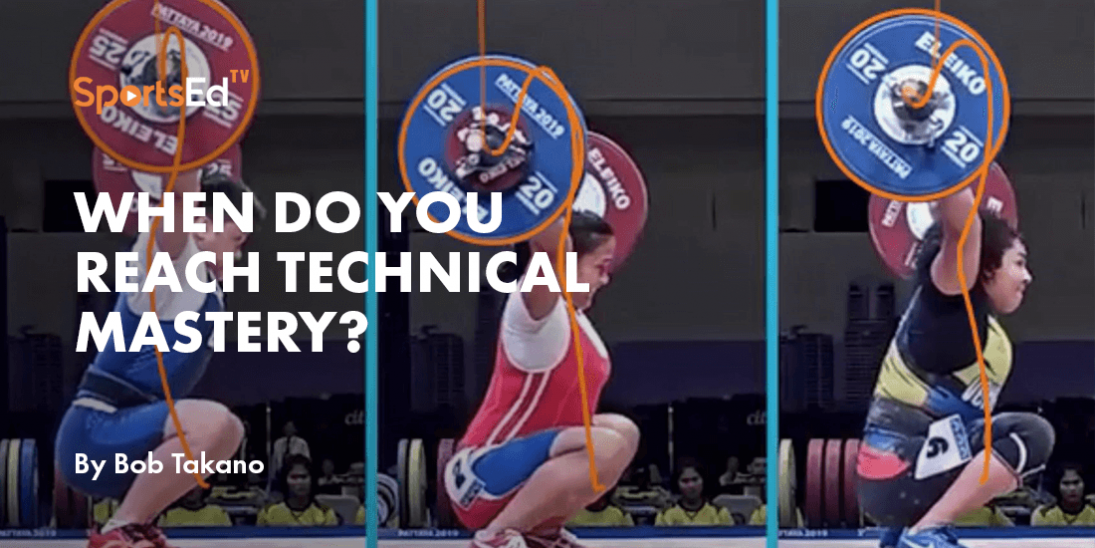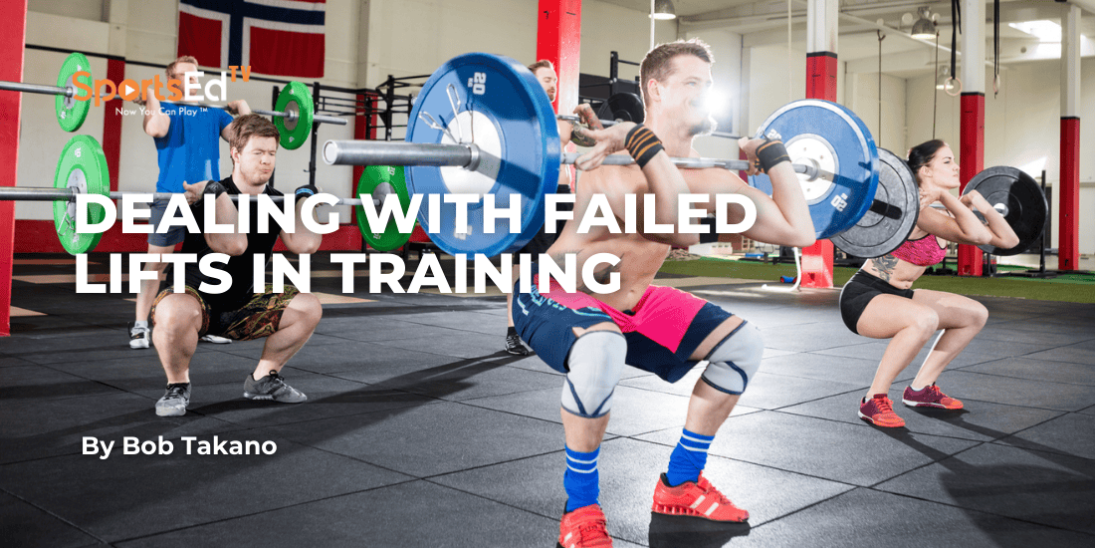Weightlifting
Welcome and thanks for visiting...

Gene Baker and the USSR Coaches’ “17 Things” List

The following is an edited version of a recent Zoom interview with former USA Weightlifting President Gene Baker, who developed the original version of the USAW coaching education products in the late 1980s. Coach Baker shares a “17 Things” list related to athlete recovery and improvement that was originally provided to him during conversations with USSR coaches at the inaugural Goodwill Games (1986).
HN: I'd like to welcome the SportsEdTV viewers and readers to an exciting interview with Gene Baker. The name is not familiar to many of you, but this is someone with extreme knowledge of how the sport of weightlifting can be improved on the individual level. We're going to talk a lot about things he discovered years ago.
Also with us is Victor Bergonzoli, the CEO of SportsEdTV, an experienced weightlifter. Victor, please jump in as much as you like.
Gene Baker is a weightlifting coach who lives in Michigan. We got to know each other in the early 1980s. I recognized his strong points and how he could contribute over the years. I worked him into a position of USA Weightlifting’s national coaching coordinator.
Gene coached locally, nationally, and internationally. He produced national and international medals across the board. Importantly, Gene was responsible for the first three volumes of USAW’s coaches’ education program in 1987. I have to say that I don't think much has changed in terms of educational details in those 35 or so years. Gene did a phenomenal job getting all of this together.
The topic for today, though, is going to be 17 key points for recovery, specifically for weightlifters. Gene, first give us a little introduction about yourself.
GB: My name is Gene Baker and I live in Troy, Michigan. I have not been involved too much in the sport of weightlifting over the last 30 some years. I was very heavily involved in the ‘80s and particularly in coaching. As the national coaching coordinator, I developed clinic programs, coaches’ education programs and materials, and things like that. As I coached more and got to coach at higher levels, I began to look at the overall state of American weightlifting. At the time we had some good lifters, but we still had a pretty good gap from the best lifters in the world. I'm an engineer by trade and wanted to quantify that differential to find out why it existed.
There were several considerations, and the first one had to do with anabolic steroids. If you asked people 35 ago, “What do you need to get better? Why are the Soviets and Bulgarians and other Eastern European lifters superior?” Everyone said, “It's the steroids.”
One of our lifters on an international trip brought back steroids they got in exchange for a pair of jeans. They gave me one of the boxes that the steroids came in. I’d taken a couple of years of Russian in college and by the mid-1980s I was translating Russian weightlifting materials. The first thing I noticed was that the steroids were long past their expiration date, probably two or three years old. Someone else, and I think Harvey may have been involved, sent Russian steroids to a US company, and the follow-up report stated these are very inferior to what we have here in America.
We concluded that we had the best steroids in the world. By word of mouth, it was discovered that our top lifters in each weight class, if they were using, were probably using a smaller dose of steroids compared to lower ranked lifters. That gives a hint that genetics may have something to do with weightlifting prowess and not the steroids. I got to thinking that steroids maybe weren't the answer. And maybe there are a whole bunch of other things that are the answer between American and top international performances.
HN: One of the things we should mention here, when considering this was the mid-1980s, is that legitimate drug testing had only begun in 1983. This testing was introduced at the first-ever (hard to believe) International Track and Field World Championships, in Helsinki in 1983. Early reports indicated many positive results. Two or three weeks later the Pan American Games were held in Caracas, Venezuela, where numerous positives included weightlifters.
So, 1983 was a wake up call for the rest of the world. Testing had moved from radioimmunoassay (RIA) to gas chromatograph-mass spectrometer (GCMS) testing that was much more sophisticated. By the mid-1980s improved testing had a huge impact at the international level. Keep in mind Gene is specially referencing today, the sporting world of 1986.
Also, Gene did not mention he is a graduate of the US Military Academy. He's spent much of his career as an engineer. Gene is one of the brightest people we had working on improving our results. Eventually, Gene will also tell you that he was president of USA Weightlifting.
I considered Gene to be a guy who could really take us forward. Let's work together and come up with some plans here that can improve our coaches’ education and improve our lifters. Let's get Gene to Russia for the inaugural Goodwill Games (a non-Olympic multi-sport event that was a Ted Turner concept) and see what he can find out. As you see now, we were pro later, I’d say anabolic steroids are not the only key to continued success at the international level.bably ahead of the curve at that point, and anabolic steroids can’t be the only answer. That was not the answer. Thirty-five years
They're great if you can get by with it, but at least most Western countries now have legitimate drug testing in place (Note: In light of recent international weightlifting headlines, it is obvious that questionable and inconsistent enforcement of anti-doping controls have failed to curb usage). We need to come up with something different that will allow the athletes to perform at their best. That's why we’re doing this blog dealing with 17 ways to assist recovery. I'm not saying scratch off number one completely. But as it relates to today, yes, scratch it off, because anabolic steroids are not one of our options. And we knew this 35 years ago.
VB: Steroids were the number one recovery aid on this list. We have 16 to go. That's what's more important. What can the athlete do today, Coach Baker?
GB: I went to Moscow as the American coach for the Goodwill Games team, and I got a chance to talk to a lot of the Russian coaches. They had us training in the Institute of Physical Culture, where most sports scientists and weightlifting experts did a lot of their work. They were very happy to talk to me. They were very willing to pass along any information. They told me if they beat an American, they got a whole lot more money than if they beat an East German. Theirs was a pretty capitalist economy.
HN: This was back in the day when the Soviets repeatedly asked, “Could you guys please get a little bit better? We would look better if we just barely beat you, instead of burying you.”
GB: The Russian coaches were very open. I said, “I'm looking for this differential. I would really like to get some information. I don't want to hear about steroids because I don't believe that that's the answer. I believe that the answer is in a bunch of things.” They helped me create this list. Today, people may think this or that is blindingly obvious, or really stupidly simple. Some of these things have become the norm today, but remember, we’re talking about 35 years ago.
These were different times. We were invited by the NSCA and others to bring the power clean into the strength and conditioning arena. When we first started, there were people saying power cleans were terrible, they'll kill you. I heard a coach tell a bunch football coaches that he'd rather have his athletes jump from a 10-foot height with the barbell on their back than have them do power cleans.
Now, everybody does power cleans, it's just a normal deal.
I brought this List of 17 Things back from Russia in 1986 but didn't have an opportunity to advance it. I got involved in the U.S. Weightlifting Federation political scene, but that didn't end well. I had some work conflicts and some home conflicts; I just couldn't do the job. I ended up resigning from the position. Harvey and I discussed the list several months ago and we decided to use it in this blog format.
HN: So many people are looking for “the secret.” As I said when I was at the NSCA and everyone was promoting creatine, taking creatine does not, in itself, create the champion, but it allows an athlete to recover, and therefore, train harder in the next session. That was the original intended purpose with anabolic steroids, enhanced recovery.
But in this era of drug testing, how can lifters now recover better and train hard again? Without adequate recovery training intensity and/or volume must be reduced. I think a lot of people have missed that. The key point here is about recovery. If you can recover properly, you're going to train harder. If you can train harder, you're going to get better. You're not going to get better simply by consuming some outside source.
GB: Right. I'd already seen this with the Russian training workloads. They were really far above what our guys were doing. Despite probably steroid use, the USSR lifters’ work capacity was superior to the average American lifter.
So, Number two on the list is stupidly simple. It's sleep! An athlete cannot burn the candle at both ends. Sleep is a tremendous recovery aid. You can't live on three hours sleep a night and expect to train hard.
HN: Sleep is when one’s muscles recover and grow. We say eight or so hours of sleep a night is very beneficial. During my days coaching at the Olympic Training Center, we had three training sessions a day. I encouraged the guys to grab a nap throughout the day.
VB: I have a question. How many hours did they sleep in Russia?
GB: They were talking eight to 10. Like Harvey said, they talked about naps. Some of the next couple of points go along with this idea.
Number three is another no brainer, adequate nutrition. We talked a lot about protein intake. They wanted somewhere between one and two grams of protein per kilogram of bodyweight when training hard. I’ve looked at the literature over the last 35 years and this remains accurate.
HN: Standard advice is 0.8 grams of protein per kg of bodyweight to remain healthy. So, 1.5 to 2.0gms for an active athlete makes perfect sense, and it's necessary.
GB: Number four is relaxation. There were techniques suggested for between heavy attempts. They taught relaxation techniques for between sets. They had relaxation techniques for after the workout. They focused on things like self-hypnosis.
Number five is mental imagery (visualization) and mental rehearsal. Anybody who's worked with an athlete in international competition or even at a local meet, knows mental imagery is crucial. One guy I coached at the national level needed to go through the whole meet mentally beforehand. We even focused on the sounds at a meet.
HN: At SportsEdTV we recently blogged about this topic. Leo Totten and I wrote a couple of pieces related to mental attitude and visualization. I would encourage readers to go back and look at these. Mental rehearsal is certainly a key part of the puzzle.
GB: Number six is massage. I noticed while in Moscow that the massage rooms were right off the gym. A lifter finished his workout and walked right to the massage table.
HN: During my early days coaching at the OTC (1981-1984), the USOC medical staff was against massage. Cyclists are accustomed to massage, and their influence changed Sports Medicine’s practices pretty quickly.
GB: Number seven is an emphasis on general physical training. I have always felt that you create an athlete first and then turn them into weightlifters. It's hard to take somebody who is not athletic and make them a weightlifter. We're seeing this with some CrossFitters becoming good weightlifters. This was something we didn't find with a lot of our athletes in the ‘80s.
VB: Growing up, I spent summers in Hungary. The top weightlifters where I trained often played soccer or basketball pre- and/or post-workout.
GB: The USSR coaches said it was an important part of their regimen. When I was in the US Army in Germany, I trained a little bit at a local German weightlifting club. After training, we played handball. I liked this because Europeans are so lower body oriented, and I was an upper body type of athlete.
HN: During my four years as national coach, our first workout was on the outdoor field at 8:45 a.m. for general physical training. I wanted to make sure the guys were out of bed and being active. For someone training at home, in school, or working, you've got to be creative to work this into your agenda.
GB: Number eight is stretching. I had a guy who’d been a powerlifter and had a hard time holding the bar overhead in the snatch. He was the strongest guy I ever coached. He’d squatted in my basement 227.5kg/3 weighing 75kg. We could not get him flexible enough to utilize his strength. Nowadays we have foam rollers and other stuff to allow different flexibility techniques.
Number nine is baths. Steam, saunas, mineral oil baths, and ice baths. I saw on YouTube a clip of Mattie Rogers buying ice, dumping it in a tub, then jumping in the tub for recovery. Here's an American lifter actually doing this kind of stuff. And her results show it, she's on top of the world.
HN: As you know, I spent a lot of time with working with cyclists. Ten or so years ago it was popular for cyclists to jump in a portable pool with ice post-race. Some recent research suggests that ice baths are beneficial for anaerobic sports, but not necessarily so much for aerobic sports. This suggests that weightlifters may actually benefit from this practice.
VB: Looking again at my Hungarian experience… the Hungarian approach was very similar to the Russians. I mean, they were part of the Soviet bloc, right? In Budapest, on every corner you have a bath and every day they would go. As a young kid I would go into the hot water. I always wondered, “Why is this guy crazy by jumping in the cold water and staying forever?"
HN: The late Carl Miller (USAW coaching coordinator, 1974-1978) suggested contrast showers in the late ‘70s. Working out one (cold) day at York Barbell I decided to try this. Nice and warm to begin, then full-blast cold, which was miserable. It doesn't surprise me, Gene, that this is one of the suggestions.
GB: You’ve just mentioned our number 10: alternating hot and cold showers. The Russian coaches suggested if there are no fancy baths, the contrast showers will work.
HN: I took saunas with our teams when we competed in Eastern Europe. We'd sit in the sauna for a few minutes and then lie in the snow. That part was miserable. Derrick Crass and I today laugh about the post-workout sessions in the snow outside Bldg. 23 (our training quarters at the time) at the Colorado Springs OTC.
VB: I just saw a clip of Lidia Valentin (ESP, World and Olympic Champion) doing this after it snowed 15 inches in Madrid.
GB: Numbers 11 and 12 are interesting. I had not heard of 11, the use of ultraviolet as a recovery means. The Russians said they actually did this. I wasn’t sure they had enough background to tell whether or not it was a good practice. They were looking for any kind of advantage. In the case of an elite lifter who totals 400kg, a gain of 1% means an increase of four kilos, often the difference between first and third place medals.
Returning to UV lighting, my wife, JeanAnn, had a lot of physical problems late in life. We used UV light for problems with the back muscles. I did some research and got a light that we used with some positive results. I've seen several companies promoting infrared as an important recovery tool. There are numerous studies available online.
Number 12 is electro-stimulation for strength gain. They again thought, if it does any good, we’ll take it.
VB: Alexeev supposedly did quite a bit of stim, and he did pretty well.
Number 13 was hand care. Lifters must take care of their hands.
HN: Derrick Crass is going to do a blog for us on the use of straps in training. Straps help protect the hands, for sure. One of our former athletic trainers emphasized keeping calluses sanded. One suggested sleeping with Vaseline on the hands (and gloves!). Keep the skin protected so you can train harder next workout.
GB: Number 14, which is pretty common today, is regular pulse and blood pressure checks. Today we have things like my Fitbit.
HN: There are many published studies that look at resting heart rate as an indicator of overtraining, or overreaching. I told the OTC lifters to take the pulse upon waking. A rise of 10% or more and we’d back off training a little bit. When pulse and BP return to normal, so does the training.
GB: The Bulgarians believed this, as well. One of their coaches did a tour of America and stayed with us when in Michigan. They were really big on pulse and blood pressure checks.
Number 15 is herbal teas. Everybody had their favorite recipe for a recovery herbal tea.
We've got all kinds of energy drinks floating around now that can be used like that. In recent years, when I coached high school football, the big thing was chocolate milk. We gave our athletes chocolate milk after a workout.
VB: That’s so interesting. Do you think we know why they were doing herbal tea? Do we now have supplements that serve the same purpose?
GB: Like most of the stuff I found in the strength and conditioning field, it's hard to get a straight answer when winning is so competitive. This guy has Product A, and this guy has Product B. Who wins? Why does one win, the other come in second? Is it the product? Coaches may be unlikely to share their “secrets.” It's hard to get a straight answer about some of this stuff.
The Soviets thought there is a small incremental value to everything, but that may not be the real reason for success. We’ve got energy drinks and other items like Gatorade recovery drinks. It's hard to pin one down and say this is better than the other. As always, if you believe something works, that often has a positive effect, regardless of content.
HN: I’m reminded of the late ‘80s, when a former Eastern European coach gave Derrick Crass a recovery tea drink recipe that contained 38 ingredients. Maybe 38 ingredients are just a little too much. But when looking at how to recover at the cellular level, there may be a couple of items to consider.
GB: The Russian coaches wanted to keep their guys at the top. And if it would help, just that little incremental amount, then it was OK. We have two things left, and they probably could have been higher on the list if I were ranking them. We've previously mentioned Number 16, and that's the overall daily regimen for the athlete. It's about managing your time, making sure that there's time for each one of these things, even 20 minutes to take a nap or something like that. And doing it every day.
Russian coaches stressed that you can't do these things haphazardly. There are only 24 hours in a day. How am I going to spend my time? Follow number two, eight hours of sleep and 1/3 of your day is gone. Now, what are you going to do in the other 16 hours? If you have to make a living and do a whole bunch of other things, it really gets tough. The daily regimen is really important.
HN: I remember in the ‘80s the Hungarians mentioned training very intensely six days a week. After the week’s training was over, they went out and relaxed. But Monday morning they were back in the gym training. The Hungarian system assigned every exercise a specific number. All data could be easily tracked and/or manipulated. Nothing was random.
As you say, it's a matter of prioritizing. If you want to be a great athlete, you're going to have to pay the price. With rare exceptions, you don’t become a champion by ignoring a disciplined approach.
GB: You have to calculate intensities and loads. The bottom line on Number 16 was all about time management. Number 17 is related, and it is multiple trainings in a day. You can't throw advanced loads at an elite athlete in one training session. Four or five hours of training may be needed. One workout that long would not be good.
I remember you had a couple of my athletes out of Colorado Springs. Like you said, you started at 8:45 a.m. Everybody's on the soccer field and moving around. Training more than once a day, a large load can be broken up. Recovery is possible between workouts. But this is a difficult challenge. If you're working or going to school full-time, there are ways to work around the challenges. It all depends on how intensely you want to make it to the top.
HN: Gene, thank you very much for your time and insight. This is a fascinating list, and you have brought up a lot of good ideas for our viewers. I think you know that we're largely an online educational content provider with lots of international viewers. Weightlifting is always one of the top videos viewed. Thank you for contributing to our mission. What are your plans moving forward?
GB: I don't know; we talked before my wife passed away about a year and a half ago, and I'm still trying to figure out what normal life is. Now we’ve had a whole year Covid. And all I know is, I've got a lot of time. I will have to figure out how to use that. Right now, the only people I coach are my two grandsons,14 and 15. The 14-year-old is just getting started. The 15-year-old is a high school football player and he's into his second full year weight training, along with enjoying a lot of things. He was shocked when I told him he needed to sleep more than four hours a night. Playing video games in the middle of the night, then trying to squat heavy the next day just wasn't working out.
VB: Please keep in mind, at SportsEdTV we would love to have you continue to contribute.
I love this concept of the list, and this has been a tremendous testimonial. What we can do with the list is once it's out and we have our viewers, is add to the list. We’ll have viewers saying, “Hey, I have a Number 18.” We can also go deeper on every point and examine what’s the difference between now and 35 years ago? What is the science behind this? We’ll do a full article on it.




